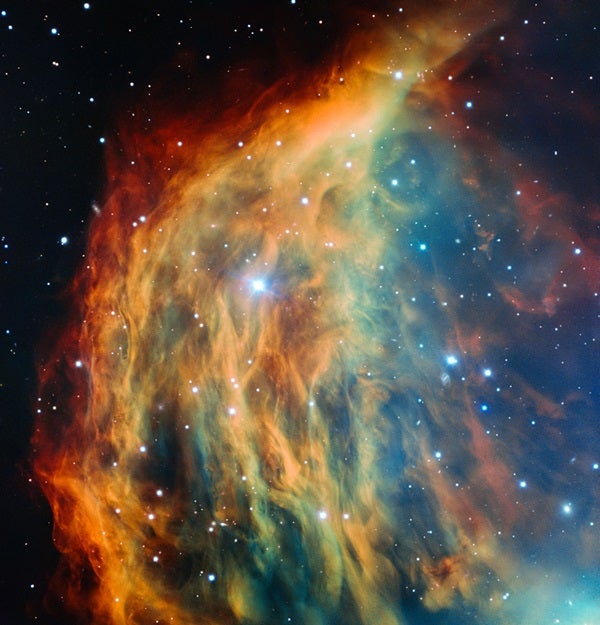This beautiful planetary nebula is named after a dreadful creature from Greek mythology — the Gorgon Medusa. It is also known as Sharpless 2-274 and is located in the constellation Gemini the Twins. The Medusa Nebula spans approximately four light-years and lies at a distance of about 1,500 light-years. Despite its size, it is extremely dim and hard to observe.
Medusa was a hideous creature with snakes in place of hair. These snakes are represented by the serpentine filaments of glowing gas in this nebula. The red glow from hydrogen and the fainter green emission from oxygen gas extends well beyond this frame, forming a crescent shape in the sky. The ejection of mass from stars at this stage of their evolution is often intermittent, which can result in fascinating structures within planetary nebulae.
For tens of thousands of years, the stellar cores of planetary nebulae are surrounded by these spectacularly colorful clouds of gas. Over a few more thousand years, the gas slowly disperses into its surroundings. This is the last phase in the transformation of stars like the Sun before ending their active lives as white dwarfs. The planetary nebula stage in the life of a star is a tiny fraction of its total life span.
Harsh ultraviolet radiation from the hot star at the core of the nebula causes atoms in the outward-moving gas to lose their electrons, leaving behind ionized gas. The characteristic colors of this glowing gas can be used to identify objects. In particular, the presence of the green glow from doubly ionized oxygen is used as a tool for spotting planetary nebulae. By applying appropriate filters, astronomers can isolate the radiation from the glowing gas and make the dim nebulae appear more pronounced against a darker background.
When the green emission from nebulae was first observed, astronomers thought they had discovered a new element that they dubbed nebulium. They later realized that it was simply a rare wavelength of radiation from an ionized form of the familiar element oxygen.
The nebula is also referred to as Abell 21 (more formally PN A66 21) after the American astronomer George O. Abell, who discovered this object in 1955. For some time, scientists debated whether the cloud could be the remnant of a supernova explosion. In the 1970s, however, researchers were able to measure the movement and other properties of the material in the cloud and clearly identify it as a planetary nebula.
This image uses data from the FOcal Reducer and low dispersion Spectrograph instrument attached to the VLT, which were acquired as part of ESO’s Cosmic Gems program.










